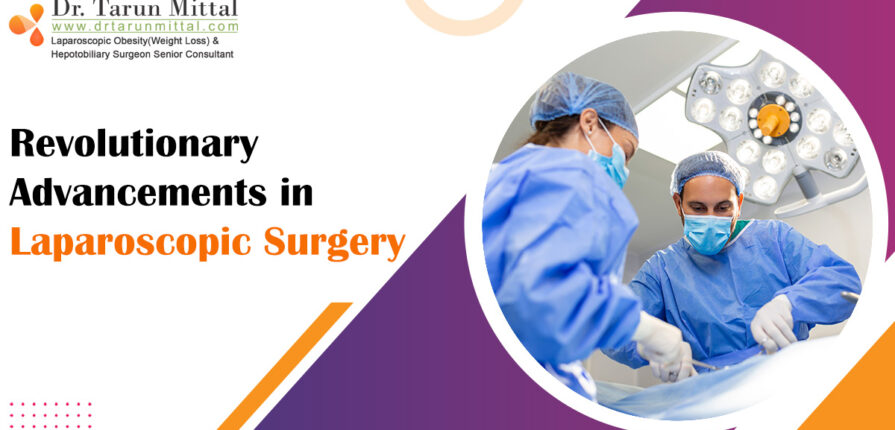In the field of surgical innovation, laparoscopic surgery stands at the forefront, offering patients and surgeons alike a transformative approach to surgical intervention. Over the years, this minimally invasive technique has undergone remarkable advancements, revolutionizing the field of surgery and paving the way for improved patient outcomes and enhanced surgical precision. Dr Tarun Mittal, fostering Best Laparoscopic Surgery in Delhi gives insight about recent advancements in Laparoscopic Surgery. With state-of-the-art equipment and patient-centred care, Dr Mittal specializes in providing the best laparoscopic surgery in Delhi. In this blog, we explore the recent breakthroughs and advancements in laparoscopic surgery, shedding light on cutting-edge technologies and techniques as described by Dr Tarun.
Enhanced Visualization with 3D Imaging
One of the most significant advancements in laparoscopic surgery is the integration of three-dimensional (3D) imaging technology. Traditional laparoscopic systems rely on two-dimensional images, limiting depth perception and spatial awareness for surgeons. With the advent of 3D imaging systems, surgeons can now benefit from enhanced depth perception and improved visualization of anatomical structures during laparoscopic procedures. This innovation allows for greater surgical precision and accuracy, ultimately leading to better patient outcomes and reduced operative times.
Robotic-Assisted Laparoscopic Surgery
Robotic-assisted laparoscopic surgery represents another groundbreaking advancement in minimally invasive surgical techniques. Robotic surgical systems, such as the da Vinci Surgical System, enable surgeons to perform complex procedures with enhanced dexterity, precision, and control. These sophisticated robotic platforms offer surgeons a magnified, high-definition view of the surgical field and precise instrument articulation, allowing for intricate manoeuvres in confined spaces. Robotic-assisted laparoscopic surgery has revolutionized various surgical specialities offering patients shorter hospital stays, faster recovery times, and reduced postoperative pain.
Single-Incision Laparoscopic Surgery (SILS)
Single-incision laparoscopic surgery (SILS), also known as single-port surgery or scarless surgery, represents a minimally invasive approach that utilizes a single access point for multiple surgical instruments. SILS techniques involve making a small incision through the umbilicus (belly button), through which a specialized port is inserted to accommodate multiple laparoscopic instruments. This innovative approach offers patients the cosmetic advantage of a virtually scarless surgery and reduces the risk of postoperative complications associated with multiple incisions. SILS has gained popularity in various surgical specialities, including bariatric surgery, cholecystectomy, and appendectomy, as it allows for excellent cosmetic outcomes and enhanced patient satisfaction.
Integration of Augmented Reality (AR) and Artificial Intelligence (AI)
The integration of augmented reality (AR) and artificial intelligence (AI) technologies holds immense promise for the future of laparoscopic surgery. AR systems superimpose computer-generated images and data onto the surgeon’s field of view, providing real-time guidance and assistance during surgical procedures. By overlaying critical anatomical structures, vital signs, and procedural information, AR technology enhances surgical precision and decision-making, ultimately improving patient safety and outcomes. Additionally, AI-driven algorithms can analyze vast amounts of surgical data, predict surgical outcomes, and assist surgeons in optimizing surgical techniques and patient care protocols.
Conclusion
The recent advancements in laparoscopic surgery represent a remarkable convergence of technological innovation, surgical expertise, and patient-centred care. From enhanced visualization and robotic assistance to scarless surgery and AI-driven analytics, these innovations are revolutionizing the landscape of modern surgery, empowering surgeons to perform complex procedures with unprecedented precision and patients to undergo minimally invasive interventions with confidence and assurance. As we embark on this transformative journey, the future of laparoscopic surgery holds limitless potential, promising safer, more effective, and patient-centric surgical care for generations to come.


